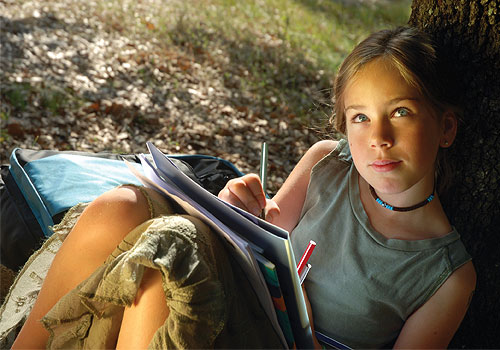We teach children to ask questions at a very early age, then we send them into the secondary school classroom where we ask them to quietly absorb information without questioning it. Project-based learning (PBL) encourages students to ask questions and explore topics that interest them within the subject. It puts them back into the driver’s seat of learning.
PBL is not simply “doing projects”; it is a process of learning that involves both the students and the teacher. The teacher serves as a guide while the students control the learning.
Project-based learning has five key steps, according to Thom Markham, author of several books and resources on project-based teaching and learning:
Step 1: State the Challenge. Students and teachers work together to identify a problem or challenge. It is important to clearly define learning targets of the project during this step.
Step 2: Define the Question. Teachers pose a question that serves as the focus of the project and identifies the deep understanding.
Step 3: Create the Assessment. Students decide how to show what they have learned, including creating their own rubrics that provide the criteria for assessment.
Step 4: Plan Backwards. Students start with the assessment and map out the plan for the project, end to beginning.
Step 5: Keep the End in Mind. The teacher assesses the students to keep them on the right track.
PBL in Action
Recently, I introduced PBL to my seventh grade geography class. In following with Markham’s five steps, we decided to look at how geography was relevant in students’ lives. We then developed a learning target that addressed this topic: by the end of the project, the students would be able to clearly explain how geography affected the state of North Dakota, as well as each of them individually.
I posed the question that they would explore: “How does geography affect me and North Dakota?” Students individually thought about the assignment, created their own rubric, then partnered with a classmate and combined their individual rubrics into one. Finally the students collaborated to put all of the rubrics together to form one class rubric which they would use to assess themselves.
Spirit of Collaboration
Because students drive the learning in PBL, I allowed them to choose their own groups. Each group decided how they would demonstrate their new-found knowledge. Then, working backward, they created an action plan. Each action plan required a teacher signature as an acknowledgment that the students were on the right track.
With approval, the students were free to work on their projects. Overall, the students had about three weeks to complete the project. They were given full access to the Internet, books, and maps, and were encouraged to interview people who live and work in North Dakota.
As the students completed the project, I introduced the Muddy Point Board to promote collaboration. Students posted questions, “muddy points,” and answers regarding their research and presentation ideas. As students reviewed and discussed questions and comments posted on the board, they worked together and became more invested in their learning and the learning of their classmates.
Each group was required to meet with me twice during the project to review the action plans and to evaluate progress. At the end of the first conference, the students created a goal for the next conference.
When each group presented its final project to the class, presenters were responsible for answering questions from classmates. This ensured that each student learned and understood the information their group presented.
The End Products
I was very happy with the students’ projects. Regular meetings with me helped ensure that every presentation answered the required question—with pictures, quotes, and/or music. Because the students were able to choose how they would present their information, there were a variety of projects, including Google presentations, papers, a skit, and even a rap song!
After their presentations, students graded themselves and their work based on the rubric the class created. I used the same rubric to grade each presentation and project, using my score for their final grade. I chose to do that because the students generally were harder on themselves and graded themselves lower, although they had met all expectations.
When I gave the students the second PBL assignment, they were excited because they had enjoyed the previous project and knew what to expect. For this project, the students answered the question, “What would it look like to live in Africa?” Each group chose a country in Africa to use as a basis for answering this question.
The second round of PBL produced far better results than the first because the students were comfortable with the learning process. The content of their projects exceeded the expectations of the rubric they had created for themselves. My students finally had a grasp of how to learn rather than what to learn.
Rachel Erickson is a seventh grade geography teacher in Grand Forks, North Dakota. rachel.erickson@gfschools.org
Published in AMLE Magazine, September 2013.
